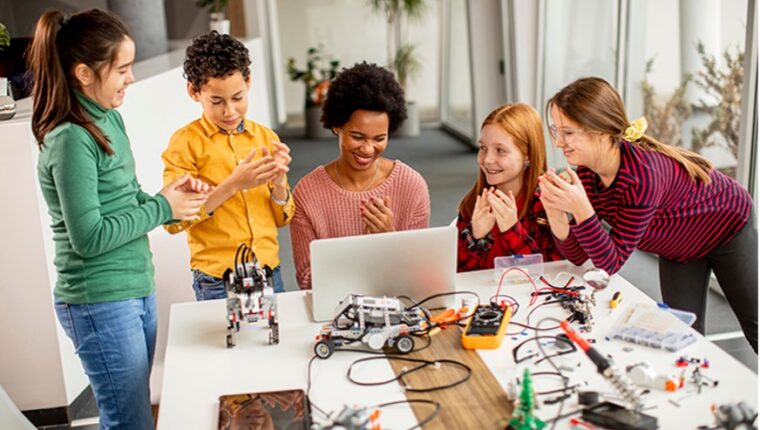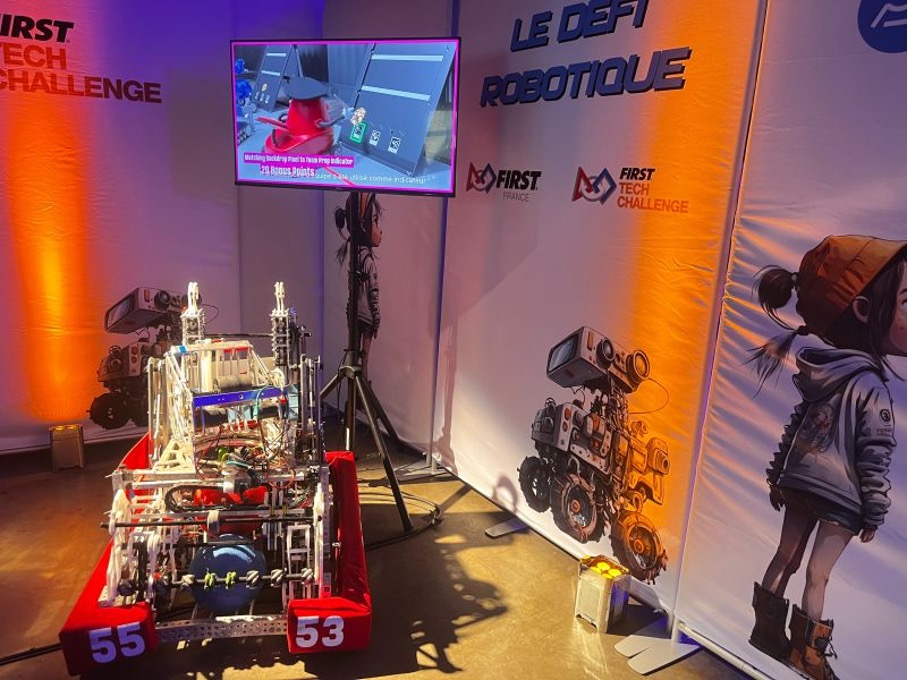
Inspiring Young Minds: The Role of Robotics in STEM Education
In today’s rapidly evolving world, fostering an interest in Science, Technology, Engineering, and Mathematics (STEM education) from an early age is more important than ever. One of the most engaging and effective ways to introduce primary and middle-school students to these fields is through robotics. Educators and parents can ignite a passion for learning, problem-solving, and creativity in young minds by integrating robotics into the curriculum.
The Power of Robotics in STEM Education
Robotics offers a hands-on approach to learning that is both fun and educational. Here are some of the key benefits:
- Interactive Learning: Robotics kits and projects turn abstract concepts into tangible experiences. Students can see the direct impact of their coding and engineering efforts, reinforcing learning through immediate feedback.
- Enhanced Problem-Solving Skills: Working with robots requires students to think critically and solve complex problems. They learn to troubleshoot, experiment, and iterate, essential skills in any STEM field.
- Collaboration and Teamwork: Robotics projects often involve group work, teaching students the importance of collaboration and communication. These social skills are crucial for their future academic and professional endeavors.
- Creativity and Innovation: Building and programming robots encourages students to think outside the box. They can design their robots to perform specific tasks or solve pproblems, fostering innovation and creativity.
Implementing Robotics in the Classroom
For educators looking to introduce robotics into their classrooms, here are some practical steps:
- Start Simple: Begin with basic kits that are age-appropriate and easy to understand. Many educational robotics kits come with step-by-step instructions and pre-built lessons tailored for young learners.
- Integrate with Curriculum: Align robotics projects with existing STEM subjects. For example, a robotics project can be used to demonstrate principles of physics, mathematics, or computer science.
- Professional Development: Teachers should seek professional development opportunities to become comfortable with the technology. Many organizations offer workshops and resources specifically designed for educators.
- Encourage Exploration: Allow students to experiment and explore with their robots. This unstructured play can lead to unexpected discoveries and a deeper understanding of the material.
If you are teaching SOLIDWORKS in your class, the SOLIDWORKS EDU team put together a series of video tutorials explaining how to design and assemble a robot in your classroom. In nine units with multiple lessons, you will work through your first part to a simple assembly with compression spring, mechanisms, wiring, detail drawings, and more.
Participating in robotics competition

Participating in robotics competitions such as FIRST Robotics (that SOLIDWORKS has been sponsoring for years), RoboCup, RoboGames, RoboNation or VEX Robotics … offers numerous benefits for students. These events provide a platform where young minds can showcase their skills and develop a wide range of abilities essential for their personal and professional growth. FIRST Robotics and its associated programs, like the FIRST LEGO League (FLL), are fantastic initiatives that introduce students to the exciting world of robotics and engineering from an early age. The FIRST LEGO League is specifically designed for elementary and middle school students. It combines the use of LEGO Mindstorms kits with real-world engineering challenges. Here are some of the key reasons why involvement in robotics competitions is highly beneficial for students:
1) Fosters Creativity and Innovation
Robotics competitions encourage students to think creatively. They are often required to:
- Innovate: Come up with unique designs and solutions for the competition’s challenges.
- Experiment: Test different approaches and learn from failures.
- Iterate: Improve their designs based on trial and error.
2) Enhances STEM Skills
Robotics competitions practically apply STEM (Science, Technology, Engineering, and Mathematics) principles. Students gain hands-on experience in:
- Programming: Writing and debugging code for robot functions.
- Engineering: Designing and building robots, which involves understanding mechanics and electronics.
- Problem-Solving: Addressing real-world challenges and finding innovative solutions.
3) Builds Confidence and Resilience
Participating in these competitions helps students build self-confidence. They learn to:
- Take Risks: Try new ideas without the fear of failure.
- Persist: Continue working on problems despite setbacks.
- Celebrate Successes: Gain a sense of accomplishment when their hard work pays off.
4) Develops Teamwork and Collaboration
Working on a robotics team teaches students the importance of collaboration. They learn to:
- Communicate Effectively: Share ideas and provide constructive feedback.
- Delegate Tasks: Assign roles based on individual strengths.
- Resolve Conflicts: Work through disagreements to achieve common goals.
These skills are crucial in both academic settings and future workplaces.
5) Improves Time Management and Organization
Robotics competitions have strict deadlines, teaching students to manage their time efficiently. They must:
- Plan: Develop timelines for completing tasks.
- Prioritize: Focus on critical tasks to meet deadlines.
- Organize: Keep materials and information in order for quick access and reference.
6) Exposure to Real-World Engineering Practices
Through competitions, students get a taste of real-world engineering and technology careers. They often:
- Meet Industry Professionals: Interact with mentors and judges who are professionals in the field.
- Understand Industry Standards: Work with industry-standard tools and technologies.
- Network: Build connections that can lead to internships, scholarships, and future job opportunities.
7) Encourages Ethical and Gracious Professionalism
Robotics competitions emphasize core values like gracious professionalism and cooperation (cooperative competition). Students learn to:
- Compete with Integrity: Follow rules and respect other teams.
- Help Others: Share knowledge and resources even with competitors.
- Celebrate Collective Achievements: Recognize the value of teamwork and community over individual success.
8) Scholarship Opportunities
Many robotics competitions, including FIRST Robotics, offer scholarships to participants. These financial aids can support further education in STEM fields, making higher education more accessible.
9) Inspires Future Career Choices
Exposure to robotics and STEM through competitions can ignite a passion for these fields. Students often discover:
- Career Interests: Identify specific areas of STEM they are passionate about.
- Educational Pathways: Understand what academic and career paths they can pursue.
- Long-Term Goals: Set goals for their future education and careers.
The Role of Parents
Parents play a crucial role in supporting their children’s interest in robotics and STEM. Here are some ways parents can get involved:
- Home Projects: Encourage children to work on robotics projects at home. Many kits are designed for home use and can provide hours of educational entertainment.
- STEM Activities and Clubs: Enroll children in after-school clubs or community programs focusing on robotics and STEM activities. These environments provide additional learning opportunities and social interaction with like-minded peers.
- Stay Informed: Keep up-to-date with the latest educational technology and resources developments. This knowledge can help parents support and guide their children’s interests.
Integrating robotics into STEM education can transform how students perceive and engage with science and technology. By providing interactive, hands-on learning experiences, robotics can inspire the next generation of innovators and problem-solvers. Educators and parents together can create an environment that nurtures curiosity, creativity, and a lifelong love of learning.
As we look to the future, let’s equip our young learners with the tools they need to succeed in an increasingly technological world. Robotics in STEM education is not just about building machines; it’s about building minds.
Back to Blog
